Amidst the dynamic landscape of Te Wahipounamu National Park
Posted On January 28, 2010
In the Island Nation of New Zealand, located in the Southwest Pacific Ocean, are three main Islands – the North Island, the South Island and the Steward Island along with other small offshore Islands.
T he South Island, flanked by Cook Strait in the north, the Tasman Sea in the south and the Pacific Ocean in the south and east. On the southwest of this Island is the World Heritage Site of Te Wahipounamu, spread across 26,000 square kilometers, including the coast of Te Wahipounamu.
he South Island, flanked by Cook Strait in the north, the Tasman Sea in the south and the Pacific Ocean in the south and east. On the southwest of this Island is the World Heritage Site of Te Wahipounamu, spread across 26,000 square kilometers, including the coast of Te Wahipounamu.
When to visit
South Island has a temperate climate. The areas in the south and south-west part of the country are more wet and cooler. The Ocean moderates the temperature in South Island, especially that in the west and south, resulting in a cool, temperate climate.
The average temperature of this Island is about 8 degree Celsius. July is the coldest month while January and February are the warmest.
How to reach
All three Islands of New Zealand have domestic as well international airports. Between the North and the South Island, the cruise on the Cook Strait makes for a 70-kilometer ferry trip.
There are cruise ships to New Zealand from Australia, which about 2000 kilometers away and other Pacific Islands too. This Island Nation has nine major ports to serve the cruise-ships.
Attractions of Te Wahipounamu
The Te Wahipounamu coastline is home to southern beaches and podocarps, some about 800 years old, which make about two-thirds of the Te Wahipounamu National Park. The Park is also the habitat of flora and fauna representing the Gondwanaland, the rare bird species like the endangered and flightless bird takahe and the world’s only alpine parrot – the kea. The terrain of the park is characterized by rocky coasts, cliffs, lakes waterfalls and mountains like the 3,754 meters Mount Cook – the highest peak of South Island.
Mount Cook is part of the Southern Alps in the Aoraki/Mount Cook National Park, spread across 707 kilometers square. The Park is also home the Tasman Glacier of the Lake Tasman, a part of the 40% of the Glacier area here. Most of the peaks here, such as the Mt Tasman, Mt Hicks, Mt Sefton and Mt Elie de Beaumont, measure above 3000 meters. Plant life mostly includes alpine plants such as Mount Cook Lily and birds include Kea. Among animals, you can spot chamois, Himalayan tahr and red deer.

The Fiordland National Park is in proximity to the city of Te Anau and covers an area of about 12,500 square kilometers, making it the largest of the 14 national parks of New Zealand. There are many fiords carved here by the glaciers in the past, one of which is the Milford Sound in the 1692 meters high Mitre Peak. Also worth noticing are the fiords Doubtful Sound and Dusky Sound. You could also spot them in the Kelper and Murchinson Mountains. Among the many offshore ice-carved Islands are the Secretary Island and the Resolution Island. Several lakes like Lake Te Anau, Lake Manapouri, Lake Monowai, Lake Hauroko and Lake Poteriteri add to the beauty of this Park. The Sutherland Falls on the Milford Track here is among the highest waterfalls of the world. Heavy rainfalls here have given birth to a lush temperate rainforests such as the Waitutu forest in Fiordland.
In the park, you can also spot the Kiwi.
Close to the city of Wanaka, in the southern ends of the Southern Alps, is the Mount Aspiring National Park over an area of 3, 555 kilometers square. It is to the west of Lake Wanaka. Of the prominent peaks here are the 3, 033 meters Mount Aspiring, 2, 542 meters Mount Pollux and the 2,519 meters Mount Brewster. Routes worth tramping here are Gillespie Pass Circuit, Matukituki Valley, Routeburn Track, Rees-Dart Circuit and the purchased land of Landsborough River Valley.

Another significant part of the Te Wahipounamu National Park is the 1, 175 kilometers square Westland Tai Poutini National Park. The landscape here ranges from high peaks of the Southern Alps, glaciers, lakes, rainforests, and remains of gold mining towns to the remote coastlines. The Park is home to the famous Copland Track that runs upstream from the Karangarua River Bridge. The Welcome Flat Hut here is also home to hot springs.
All these parks are popular sites for tramping, skiing, hunting and mountaineering and you can also enjoy a helicopter tour of them. In fact, Milford, Kepler and Routeburn are managed as Great Walks and for Routeburn and Milford; you need to book your walk!
Also attracting the tourists here are the trail through the rainforests with a rich flora and fauna. There park is has about 100 species of birds, more than half being natives and quiet a few endangered ones.
For wading birds, the Okarito estuarine Lagoon is home along that to others. Several wetland birds like the grey duck Anas superciliosa, paradise shelduck Tadorna variegate and other birds can be spotted in the freshwater wetlands here.
Other than bird-watching, you can experience diving, kayaking in the fiords, jet-skiing in the rivers in the Westland and skiing in the glaciers as well. The Franz Josef and the Fox glaciers are the most visited glaciers in the Te Wahipounamu National Park.
Apart from these parks, there are several nature reserves here in the park, all of these total to about 40 separate protected areas, such as the Waitangiroto and the Scenic Reserves like the various Lakes such as the Lake Paringa, Lake Moeraki, Lake Rotokino, rivers like the Jacobs River, the Saltwater Lagoon, the White Heron Lagoon, marshlands, and other such areas that make for a good site.
Overall, the Te Wahipounamu coastline and the Te Wahipounamu National Park are perfect for an adventurous vacation, if that’s how you prefer revitalizing your senses.

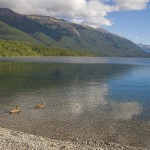
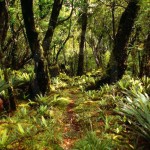
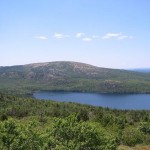
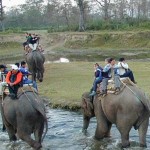
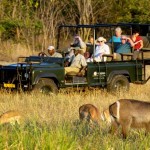






New Zealand as a whole is the place to be! There can’t be any questions arising yes or no. Each and every place in NZ is flawless!
This place is al time adventurous. Your life is thrill when your in NZ! You start living on the edge.
12,500 sq km national park! This is vast very vast! People surely can go missing in this place! What an exciting trip this can be!
A national park generally means where you can see different species of animals and birds but this has got everything worth seeing, cliffs, alps ranges, rocky coasts, waterfalls , everything!
I’ve always heard about the alpine parrot in different TV channels like discovery and national geographic. Its so amazing that a bird found only in 1 place and that too where its cold! would love to go here and check it out.
I haven’t even heard of such animals and birds in my life! Red deer, Himalayan tahr, Kea! There are so many unknown species free out there in this world
What a great place! There are so many reasons to go here. Wild life, adventure and little bit of luxury! Kayaking and jet skiing!!! My favorite sport! Would die to do it anywhere!
NZ second name has to be adventure land! This country is just too amazing and yet clean with very less population! Hope it remains the same ever!
I can’t believe that you can enjoy so many things in this one place only. Its like a country within a country! This place is not for normal public. Only those who have balls and wana live life, place to be!